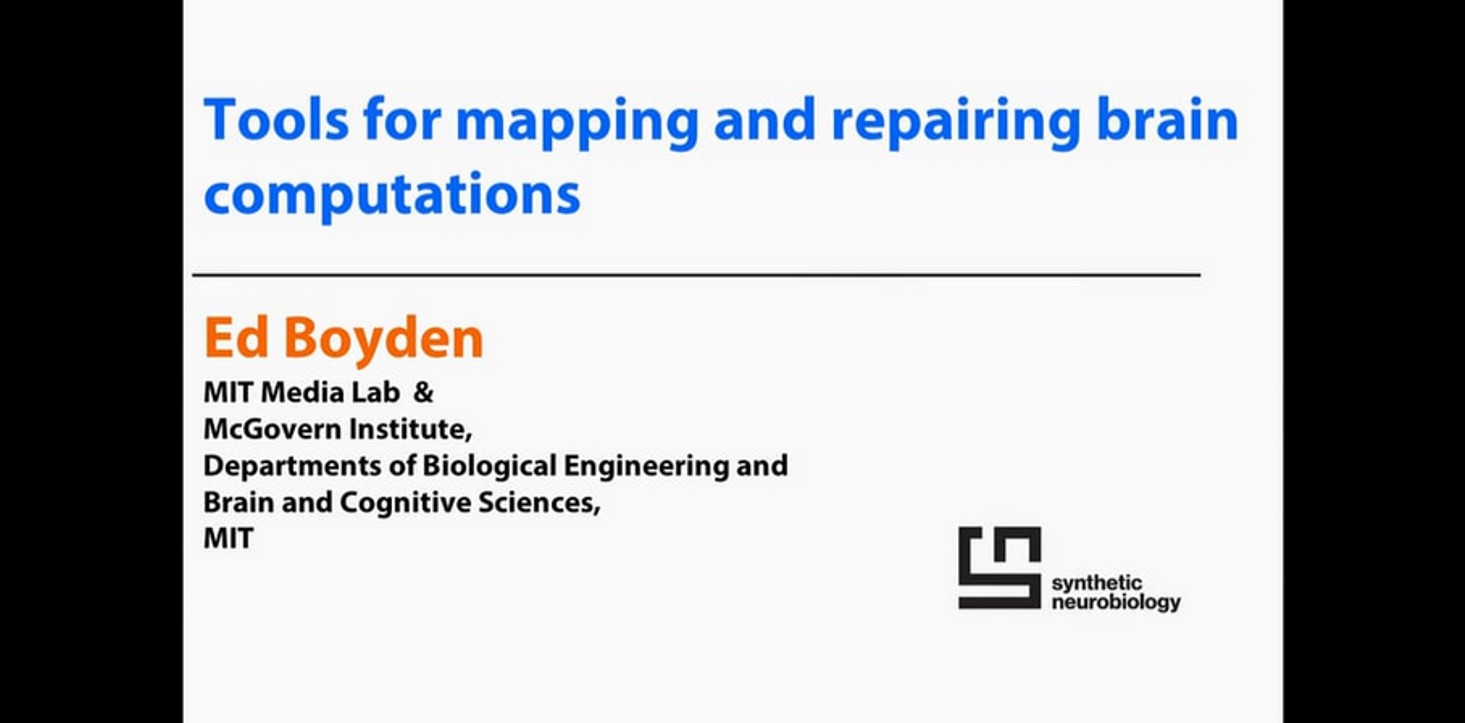Tools for Mapping Brain Computations- Edward Boyden, MIT
August 18, 2015
Keywords:
- Brain mapping
- Automated data analysis
- Complex biological systems
- Expansion Microscopy
- Clamp neurons
- Robotic quad patching
- Imaging neural activity
- Neural activity
Abstract
Complex biological systems like the brain present a challenge: their molecular building blocks are organized with nanoscale precision, but support physiological processes and computations that occur over macroscopic length scales. To enable the understanding and fixing of such complex systems, we are creating tools that enable molecular-resolution maps of large scale systems, as well as technologies for observing and controlling information processing in such systems. First, we have developed a method for imaging large 3-D specimens with nanoscale precision. We embed a specimen in a swellable polymer, which upon exposure to water expands isotropically in size, enabling conventional diffraction-limited microscopes to do large-volume nanoscopy. Second, we have collaboratively developed strategies to image fast physiological processes in 3-D with millisecond precision, and used them to acquire neural activity maps throughout small organisms. Third, we have collaboratively developed robotic methods to automate single cell analysis in living mammalian brain. Finally, we
have developed a set of genetically-encoded reagents, known as optogenetic tools, that when expressed in specific neurons, enable their electrical activities to be precisely driven or silenced in response to millisecond timescale pulses of light. In this way we aim to enable the systematic mapping, dynamical observation, and control of complex biological systems like the brain.
